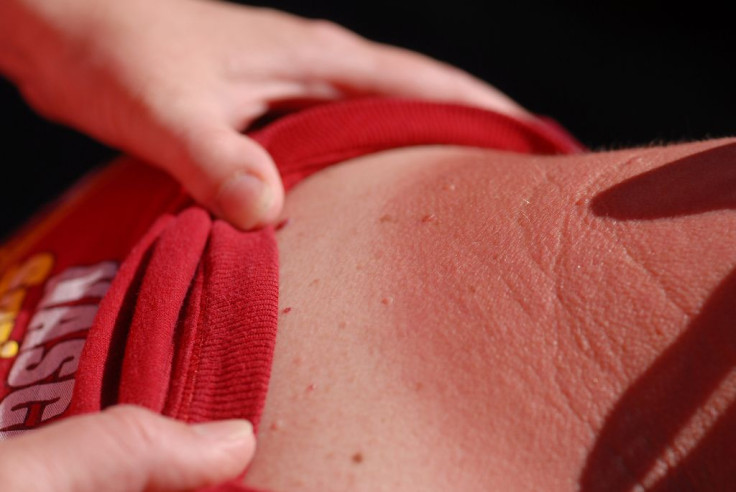Skin Cancer Signs Not Clear To Three-Quarters Of People, Threatening Healthy Practices

The most common form of cancer in the United States may also be one of the least obvious to spot. New research from British Association of Dermatologists (BAD) finds that 77 percent of people do not feel confident in their abilities to recognize melanomas of the skin, despite 72 percent admitting to getting sunburned in the last year.
In 2011, the latest year data are available, some 66,000 Americans were diagnosed with melanomas of the skin and more than 9,000 people died. The majority of both cases were men, who are about twice as likely to suffer from skin cancer and die from it as women. Experts fear many of the cases could be due to ignorance over the disease’s risks, particularly as people fail to spot the warning signs early enough.
“This is a reflection of poor sun protection habits,” said Johnathon Major of BAD. “People underestimate the damage that sunburn can do to their skin, and many think that skin reddening is just a harmless part of the tanning process, rather than a sure sign that you have damaged your skin irreparably.”
In addition to checking for new lesions that itch, scab, and bleed for at least four weeks, health officials use the ABCD rule of thumb for checking suspicious spots:
- Asymmetry: each half may be a different size or shape
- Border: edges of the area may be irregular or blurred, and sometimes show notches
- Color: may be uneven with different shades of black, brown, or pink
- Diameter: at least 6mm in diameter
Not all skin cancers appear as melanomas, however. People should take care to look out for other signs, such as new patches of scaly, crusty, and inflamed skin or “a growth with a pearly rim surrounding a central crater, a bit like an upturned volcano,” the BAD reports.
How To Prevent
Warnings to use sunscreen are nothing new — most people are well aware of the dangers posed by ultraviolet rays, said Charlotte Proby, professor of dermatology at Ninewells Hospital and Medical School. “However, this has yet to translate into a culture of sun protection and skin checking which would do a lot to curb the incidence and deaths from this disease.”
The Skin Cancer Foundation recommends monthly head-to-toe screenings for any new or changing lesions on the skin. In their survey of 1,018 people in 2014, however, BAD researchers found only four percent of people abide by the guideline and 40 percent never check their skin at all.
Checking for abnormalities isn’t the only strategy for avoiding life-threatening skin cancer, Rokhsar points out. While most people know sunscreen can offer protection, they may not know how much to apply and how often. UV rays can damage the skin in as little as 15 minutes, even on cloudy days. The Centers for Disease Control and Prevention recommends applying a broad spectrum sunblock — meaning one that covers both UVA and UVB rays — of at least SPF 15 every two hours or after swimming, sweating, or toweling off.
“As summer comes around again,” Proby said, “we want people to consider the message that you can enjoy the warm weather whilst staying safe.”
Published by Medicaldaily.com



























